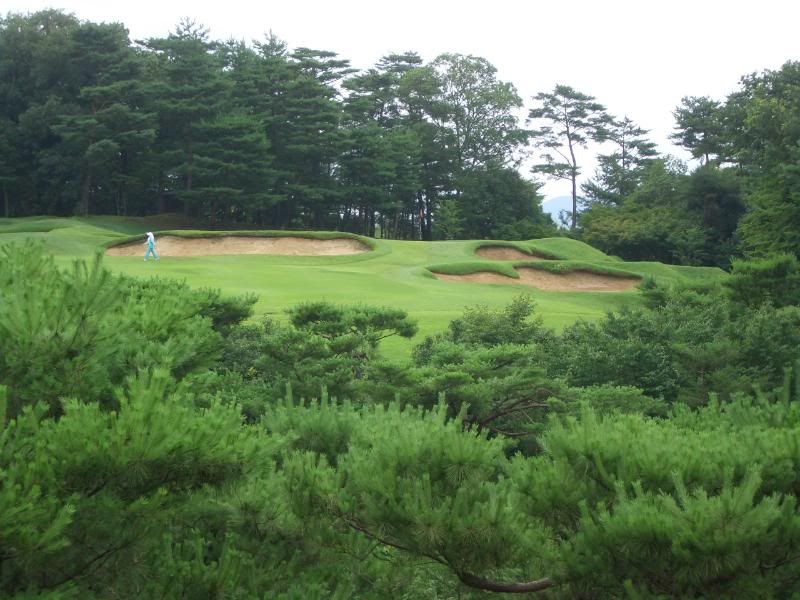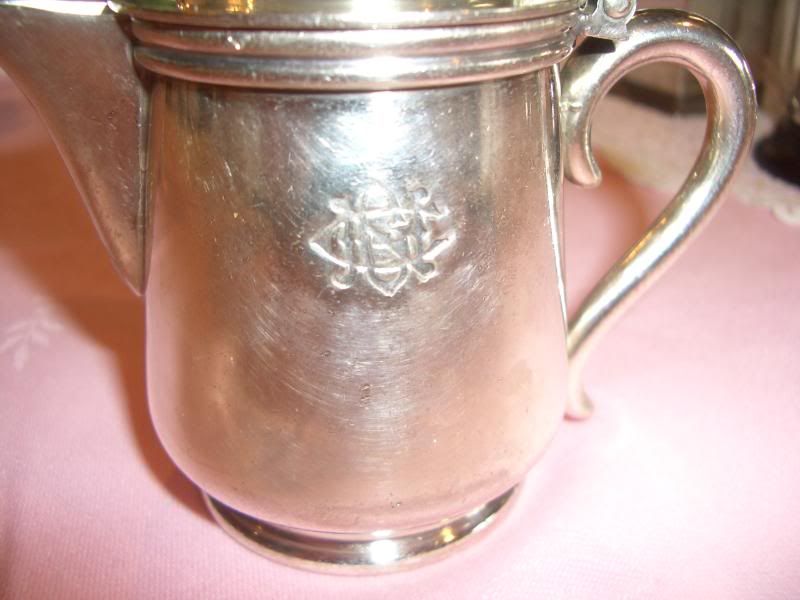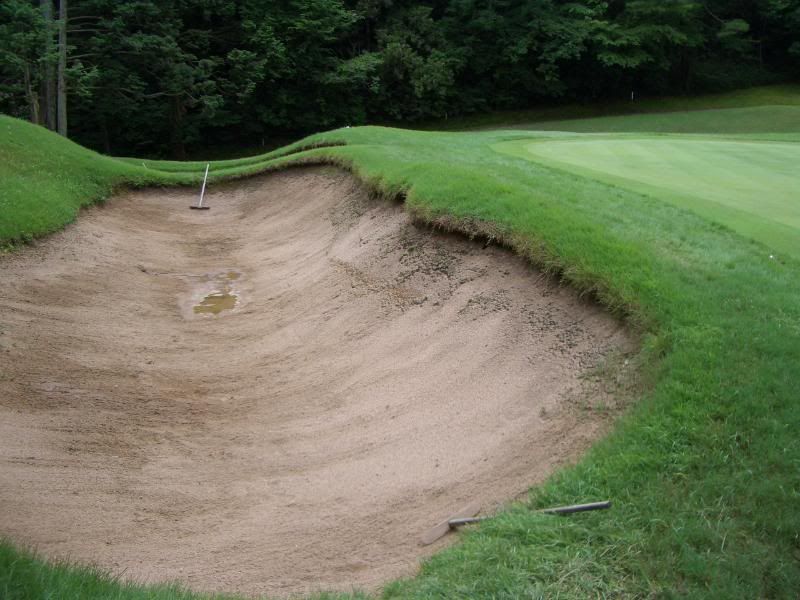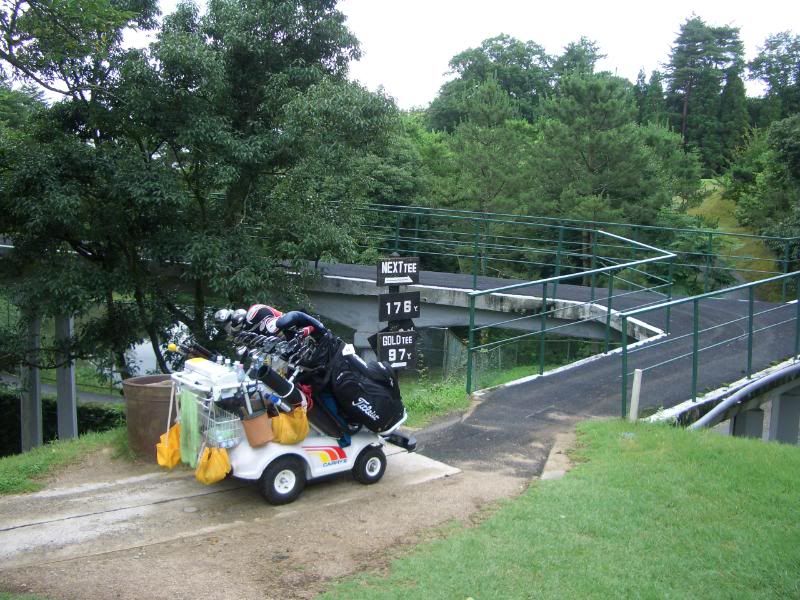鳴尾ゴルフ倶楽部

Note: the history portion was pieced together and translated from Japanese. I’m sure I lost something in the translation, so apologies for any inaccuracies.
Note 2: for background read Thomas MacWood’s excellent account of Alison in Japan if you haven’t already.
http://golfclubatlas.com/in-my-opinion/tom-macwood-gliding-past-fuji-ch-alison-in-japanNote 3: for comparison my Kawana photos are here-
http://golfclubatlas.com/forum/index.php/topic,43954.0/Naruo Golf Club has roots with the group of Scottish and British expats that introduced golf to Japan. The Kobe Golf Club, the first course in Japan, sits at the peak of Mount Rokko above Kobe. Since Rokko was covered in snow four months of the year, the man responsible for Kobe Golf Club, Arthur Groom, and a friend, William John Robinson started a six hole golf course called Yokoya Golf Association in 1904. In 1914, they moved the course to nearby Naruo-hama and started a nine hole course called Nauro Golf Association. By 1920, membership had dwindled down to just six members and the course had deteriorated so badly that it was unplayable. W.J. Robinson took control of the course in 1920 and established the Naruo Golf Club. The humble origins of Naruo begin with Robinson and friends searching through wheat and puddles for the greens of the Naruo-hama course. Initially three holes were restored.
By 1924, Nauro Golf Club was extended to 18 holes. In 1927, a financial crisis hit Japan and Naruo’s patron, the Suzuki store, went bankrupt. They couldn’t maintain 18 holes so it became a nine hole course for the second time. Three brothers, all members of Nauro, longed to build a true championship course but their dream was postponed by the ’27 economic shock. Joe E. Crane, Harry C. Crane, and Bertie E. Crane would spend their weekends during that time searching the Kansai area for a good piece of land and eventually discovered the location where the course sits today. The built the Inagawa course in 1930. Nauro Golf Club then had two courses, the Inagawa Course which was known as the Mountain Course and the Naruo-hama course, known as the Seaside or Beach course. H.C. Crane thought that the mountain course needed a famous architect to give it credibility.
C.H. Alison was in Japan and was invited to make changes to the course. Alison had already been involved in Tokyo Golf Club, Hirono and Kawana, and Crane asked Allison to remake Naruo. Alison agreed to take the job and in 1931, he began to make changes. He stayed one week and remarked that the land and routing was already quite good. In spite of that, he made changes on sixteen holes. Most of the construction was finished that year. In 1936, the course was finished and the Japan Open was held at Naruo. By that time the course was said to blend with nature and had rightfully gained its fame as one of the the top courses of Japan. Due to economic and political pressures Nauro-hama was closed in 1939. Korai grass was in vogue during that time and the Naruo-hama course had korai planted. 1500 tsubo (about 5000 square meters) was moved to the mountain course (the present Naruo Golf Club). During WWII the course was requisitioned for military use but in 1949 the course was restored to its original condition. In 1956, a new golf club was established and in 1963, irrigation was added. Outside of the korai and the addition of irrigation the original dream of the Crane brothers and influence of Alison remains today.
Playing Naruo
Heading out to the first tee
Nauro is a challenging loop and a difficult course. I read that the average age of the 700 members of the course are around 70 years old. Kudos to the members that play and survive this course day after day, year after year. It could have been the heat and humidity or spending the day negotiating difficult rough and deep bunkers, but by the end of the round my group and the others in the clubhouse enjoying a post-round drink looked drained and defeated.
Nauro is one of the oldest courses in Japan, but the welcome and the total experience is not markedly different than any other course here. Like anywhere else in Japan you arrive and check-in, change clothes, break for lunch after nine holes, and take the obligatory post-round communal bath. The only hint of pedigree is found on the walls of the clubhouse and the Naruo Golf Club logo that is literally everywhere. Even the coffee creamers carried the logo. They were pure silver and seem like part of an era passed. Despite that, there’s no pretention here, no stigma and division in being a visitor or a foreigner. Naruo is just great golf at a great course. Very refreshing.
The Naruo Golf Club logo
At the end of the rainy season, the course was green and wet. A ball struck on the fairway will take a small hop and come to rest and if you are unfortunate enough to stray (you will), the ball is gobbled up very quickly. This is not the season for firm and fast.
Alison’s trademark bunkering and well-protected greens are immediately identifiable. The fairways are narrow and there is not much room for error, but there is always a safe route to the green. The rough is humbling and easy to find.
Like Kawana, the greens are korai. Slow, but true, they take a bit of time to adjust to but after a few holes it wasn’t difficult for us to adapt. The bunkers were hard and wet but not a surprise given how much it has rained over the past few weeks. One of my playing partners after taking three or four whacks in a particularly menacing bunker just picked up the ball and walked away. So much for that samurai spirit.
Bunkers after the rainy season
Highlight of the round
On the first tee waiting for the first of our group to tee off, I was standing next to the caddy. His shot was struck well but started fading right….
…suddenly…
“FAAAAAAAAAAAAAAAAAAAAAAAAAAAAAAAAH”
The caddie lets out a full-throated, full fifteen second bellowing Japanese version of ‘fore’. I’m sure three fairways over people were ducking ready to get hit by a wayward golf ball. I was standing next to her so it was as painful for me as the poor guy that teed off. The ball was just a bit right and really no one was in danger so it was mostly unnecessary.
This became the routine over the course of the round. A bad tee shot amplified by the caddy screaming a fore bastardization and totally crushing any confidence you might have had and making a bad shot that much worse.
My second favorite caddy moment was when I hit a great uphill approach that just cleared a particularly menacing bunker. I looked to the caddy for a little bit a love and her response was just "oh, not a good shot, it's way over the green." Sure enough, way over. Thanks.
The walk to the first tee Automated cart system
Automated cart system
Photos and hole-by-hole to follow-